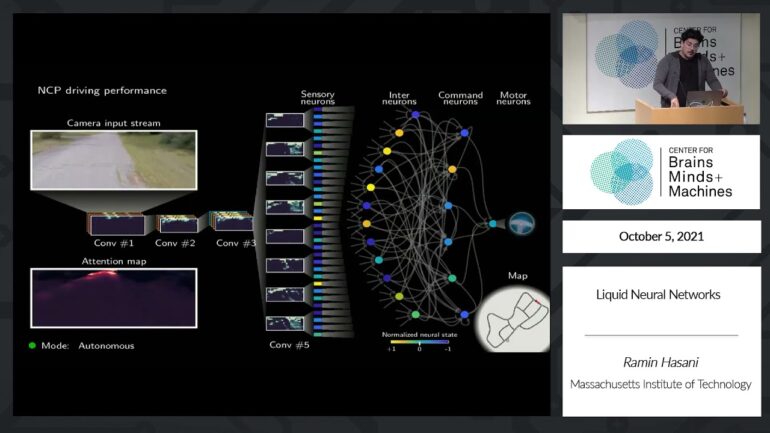TL;DR:
- Liquid AI, an MIT spinoff, is focused on developing versatile AI systems powered by liquid neural networks.
- The startup secured a substantial $37.5 million in funding from various investors.
- Liquid neural networks are compact, efficient, and highly adaptable, inspired by roundworm neural architectures.
- They require significantly less computational power compared to traditional AI models like GPT-3.
- Liquid neural networks excel in predicting future values and autonomous navigation, outperforming other algorithms.
- Applications span drone search and rescue, wildlife monitoring, delivery logistics, and more.
- Liquid AI aims to compete with foundation model companies and provide AI infrastructure for customized models.
- The company’s growth is poised to expand its 12-person team to 20 by next year.
Main AI News:
In the realm of cutting-edge AI innovation, Liquid AI, a promising MIT spinoff, is setting its sights on revolutionizing the landscape. Spearheaded by robotics luminary Daniela Rus, this visionary venture aims to construct versatile AI systems underpinned by a novel AI model known as the liquid neural network.
Liquid AI, having emerged from stealth mode with a splash, announced a substantial $37.5 million infusion of capital in a two-stage seed round. Notable backers include OSS Capital, PagsGroup, Automattic (the parent company of WordPress), Samsung Next, Bold Capital Partners, ISAI Cap Venture, and esteemed angel investors like Tom Preston Werner, Tobias Lütke, and Bob Young – luminaries in their own right. Post-investment valuation places Liquid AI at a robust $303 million.
Joining forces with Daniela Rus are Ramin Hasani as CEO, Mathias Lechner as CTO, and Alexander Amini as Chief Scientific Officer. Ramin Hasani, formerly the principal AI scientist at Vanguard, brings a wealth of expertise, having joined MIT after a successful tenure. Meanwhile, Lechner and Amini, seasoned MIT researchers, have played integral roles in the development of liquid neural networks, alongside Hasani and Rus.
But what exactly are liquid neural networks? These innovative models are defined by equations governing individual neuron behavior over time, offering a remarkable level of adaptability. Drawing inspiration from the neural architecture of roundworms, liquid neural networks exhibit two distinctive advantages: they are more compact than traditional AI models and demand significantly less computational power to function efficiently.
To grasp the significance of this innovation, let’s draw a comparison with the behemoth that is GPT-3. GPT-3, a predecessor to OpenAI’s GPT-4, boasts a staggering 175 billion parameters and approximately 50,000 neurons. In contrast, a liquid neural network, tailored for tasks such as drone navigation, can comprise as few as 20,000 parameters and less than 20 neurons. The reduced complexity translates into lower computational requirements, a highly desirable feature at a time when AI computing resources are at a premium. In practical terms, a liquid neural network designed for autonomous driving could potentially operate on a modest Raspberry Pi.
However, the advantages of liquid neural networks don’t stop at efficiency. These networks possess a remarkable ability to adapt their parameters dynamically over time, a feature that sets them apart. They process sequences of data, allowing them to respond to changing circumstances, even those they were not specifically trained for, such as fluctuating weather conditions in self-driving scenarios.
In various tests, liquid neural networks have outperformed state-of-the-art algorithms in predicting future values across diverse datasets, from atmospheric chemistry to traffic patterns. Their most impressive feat, though, lies in autonomous navigation. Liquid AI’s team trained a liquid neural network using data from a skilled drone pilot and deployed it on a fleet of quadrotors, which successfully navigated previously uncharted territories, even in challenging conditions.
The applications of liquid neural networks are far-reaching, encompassing drone search and rescue, wildlife monitoring, and delivery logistics. Moreover, they hold the potential to analyze any time-varying phenomena, such as electric power grids, medical data, financial transactions, and weather patterns, as long as sequential data is available.
So, what’s Liquid AI’s grand vision? Their mission is clear: commercialization. They aim to compete with foundation model companies, including giants like OpenAI, by developing groundbreaking Liquid foundation models that surpass traditional GPTs. Additionally, they plan to offer on-premises and private AI infrastructure to customers, enabling them to build custom models for diverse applications while ensuring accountability and safety.
As Liquid AI continues its journey, one can only anticipate further breakthroughs on the horizon, propelling liquid neural networks into the forefront of AI innovation. With a presence in Palo Alto and Boston, this dynamic startup is poised to grow its 12-person team to 20 by early next year, underscoring its commitment to pushing the boundaries of AI technology.
Conclusion:
Liquid AI’s breakthrough in liquid neural networks holds immense potential for the AI market. Their efficiency, adaptability, and ability to outperform existing models open doors to diverse applications, impacting industries from autonomous vehicles to data analysis. With substantial funding and a clear commercialization strategy, Liquid AI is well-positioned to challenge established players and drive innovation in the AI sector.

